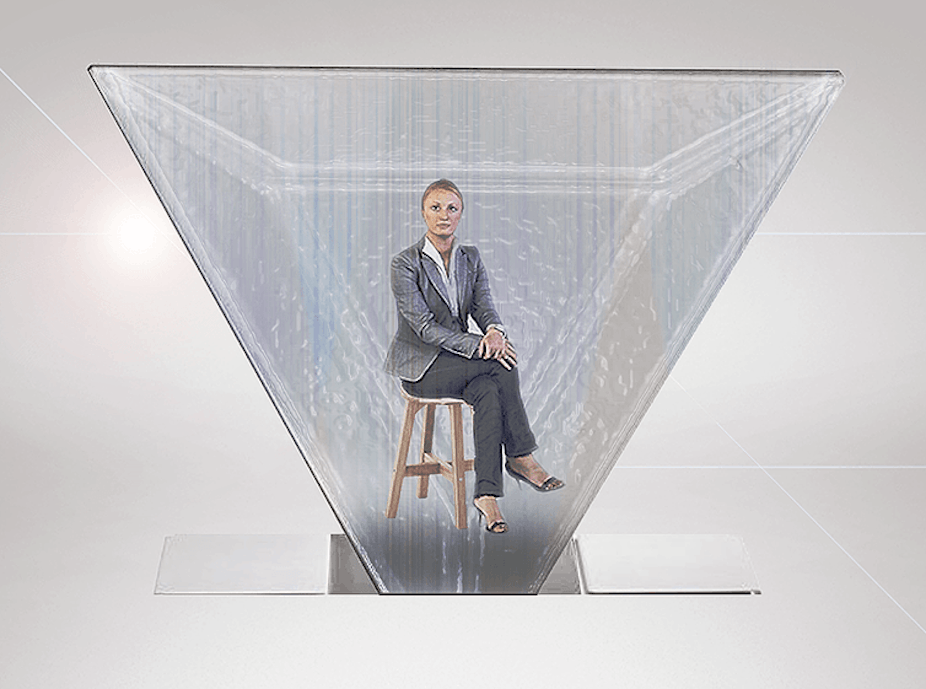Returning to court to give evidence against their attacker can be a harrowing experience for victims of sexual abuse, and many have described it as like having to experience the abuse all over again. However, the rise of augmented reality and holographic technology – that could bring vulnerable witnesses into court in 3D instead – could offer a solution.
Studies have found that secondary victimisation – such as victim-blaming and insensitive behaviour from police, judges and social workers – can make victims feel violated and traumatised. Special measures and other means to testify are available but lawyers have argued that the demeanour of complainants, especially when testifying, can affect the jury’s perception and hinder their case.

The absence of a complainant in the courtroom, and the mediating effect of a video link, may create a distance between them and the jury. Many professionals have voiced concern that the use of video link can also make it less likely that a witness’ account will incite sympathy and/or be believed.
Non-verbal communication such as body language plays a significant role in criminal trials, especially in sexual assault cases. Jurors use “intuition” to judge demeanour, deception and credibility from the posture, gaze and expression of witnesses. This poses a challenge in cases where special measures have been used.
During a video link testimony, the witness is simply a two-dimensional representation of themselves on a screen. These subtle visual, non-verbal and verbal cues may not be properly interpreted by jurors, who then may not reach the correct conclusion about the credibility of the witness.
A technological courtroom
There have been calls for a review of alternatives in rape trials and while technology has been accused of marginalising empathy in today’s society, it could bring about a social good in this case. Augmented and virtual reality technology used in the courtroom could allow a witness to provide a testimony from a different location but appear in front of the judge and jurors in three-dimensional form with the use of wearables and headsets.
Augmented reality superimposes graphical, audio and other sense enhancements over the real world and in real time and they can interact with reality. It entered the mainstream recently with the enormous popularity of Nintendo’s Pokemon Go on smartphones. But its real potential lies in wearable technology.
A system for use in court would superimpose augmented graphic elements in specific locations, so that individuals could appear in the witness box without having ever entered the courtroom. This approach would shield vulnerable witnesses from the stress of giving testimony in person, but ensure that the jury sees a more realistic testimony. The same technology could be used in situations where evidence is given to the jury alone.
Virtual reality (VR) – which can project images of a person but unlike augmented reality, does not interact with reality – has been shown to trigger empathy in users. In fact, charities have employed VR to illustrate harsh conditions of donation recipients to potential donors. Live-streaming VR technology has already been used in concerts and in political debates. Adapting it to the courtroom would not be a great leap and there have already been calls for virtual reality technology to be put to this sort of use.
Then, there’s emerging holographic technology that could be adopted for the use in the courtroom. Commercial solutions exist, such as projections that allow for full-body images to be cast on specially-tempered film or glass to create the illusion of a hologram, as well as other methods. The advantage is that no headsets or goggles are required, and the technology is less complicated than AR and VR.
Sound matters too
Regardless of the technology adopted, audio plays a massive part in creating realistic engagement with virtual or augmented reality environments. For jurors to feel like they are hearing a witness as if they were physically in the witness stand, spacial audio is essential. It would allow jurors to note every vocal cue or inflection during testimony.
There have been calls for technology to facilitate witnesses to give testimony remotely since the early 1990s. In the US, Supreme Court Chief Justice John Roberts acknowledged that courts will always be slow to adopt technology, but that if it assists in access to justice it should be implemented.
Recent studies in the US have found as many as 68% of sexual assault victims do not report assaults – often due to inadequacies in law enforcement organisations designed to help them, or specifically to avoid the harrowing court procedures. Augmented reality and VR could help bring about justice in more cases: it is time the technology had its day in court.

